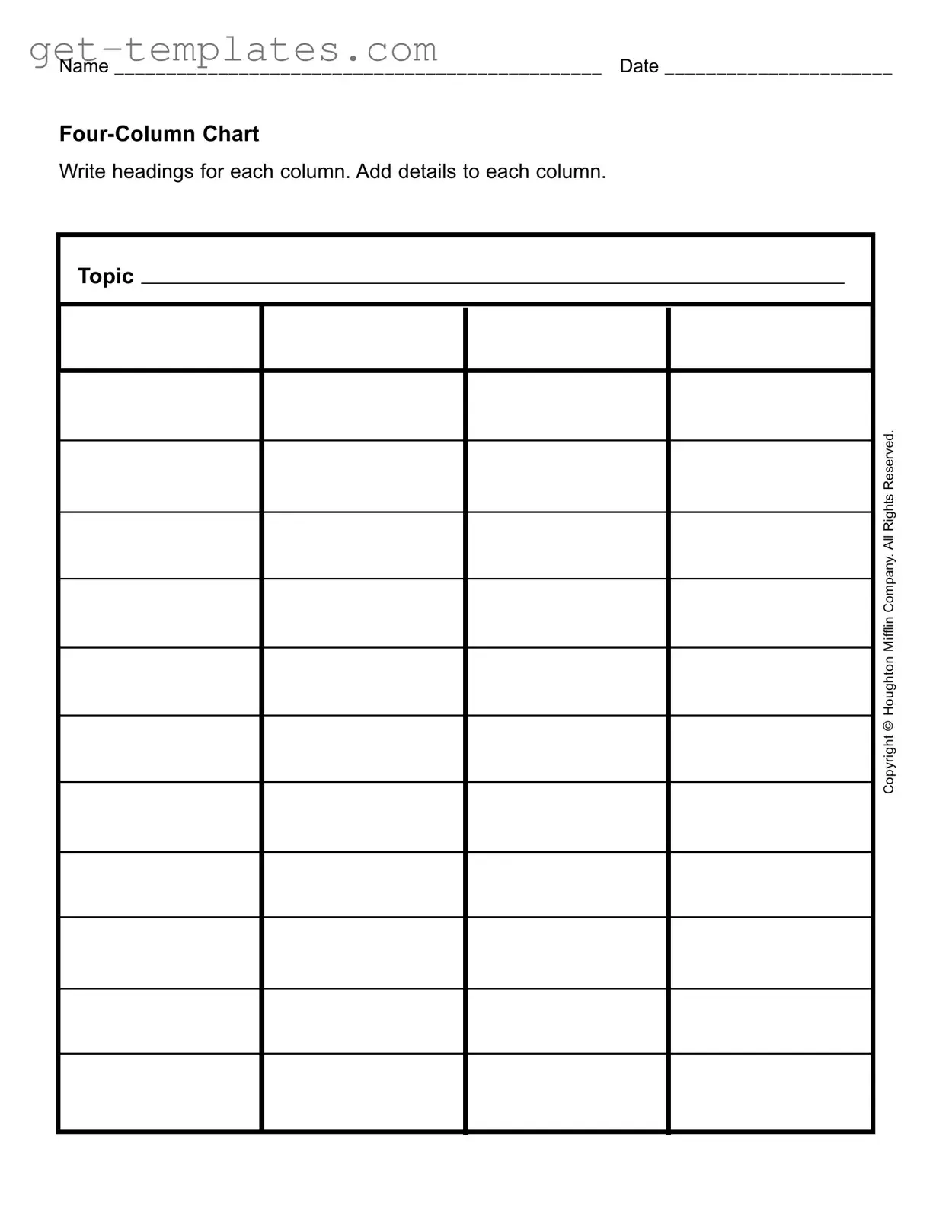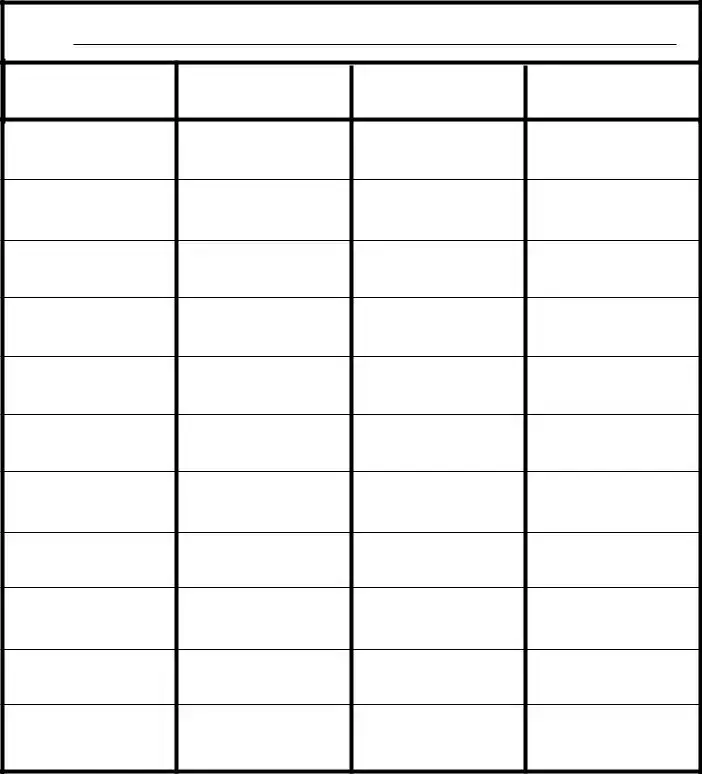The Four Column Chart form is designed to help organize information clearly and effectively. It allows users to categorize and compare details related to a specific topic, making it easier to analyze data and draw conclusions.
How do I fill out the Four Column Chart?
To complete the form, follow these steps:
-
Write a title or heading for each of the four columns at the top of the form.
-
In each column, add relevant details that correspond to the headings you have chosen.
-
Ensure that the information is organized and easy to read.
Can I use the Four Column Chart for different topics?
Yes, the Four Column Chart can be used for a variety of topics. Whether you are comparing products, analyzing data, or brainstorming ideas, this form is flexible enough to accommodate different subjects.
There is no strict format for the headings. However, it is best to keep them clear and concise. This will help ensure that the information in each column is relevant and easily understood.
How can the Four Column Chart help with decision-making?
The Four Column Chart simplifies the decision-making process by visually organizing information. By comparing details side by side, it becomes easier to identify trends, strengths, and weaknesses, which can inform your choices.
Who can benefit from using the Four Column Chart?
Anyone can benefit from using the Four Column Chart. It is useful for students, professionals, and anyone looking to organize information effectively. Teachers may also use it as a teaching tool to help students learn how to categorize and analyze data.
Can I modify the Four Column Chart for my needs?
Absolutely! Feel free to adjust the format or headings to better suit your specific needs. The flexibility of the chart allows for customization, so you can create a version that works best for you.
The Four Column Chart form can often be found in educational resources, online templates, or as part of specific software applications designed for organizing information. Check with your organization or educational institution for access to the form.

